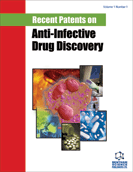Abstract
The emergence of resistance in Tuberculosis has become a serious problem for the control of this disease. For that reason, new therapeutic strategies that can be implemented in the clinical setting are urgently needed. The design of new compounds active against mycobacteria must take into account that Tuberculosis is mainly an intracellular infection of the alveolar macrophage and therefore must maintain activity within the host cells. An alternative therapeutic approach will be described in this review, focusing on the activation of the phagocytic cell and the subsequent killing of the internalized bacteria. This approach explores the combined use of antibiotics and phenothiazines, or Ca2+ and K+ flux inhibitors, in the infected macrophage. Targeting the infected macrophage and not the internalized bacteria could overcome the problem of bacterial multi-drug resistance. This will potentially eliminate the appearance of new multi-drug resistant tuberculosis (MDR-TB) cases and subsequently prevent the emergence of extensively-drug resistant tuberculosis (XDR-TB). Patents resulting from this novel and innovative approach could be extremely valuable if they can be implemented in the clinical setting. Other patents will also be discussed such as the treatment of TB using immunomodulator compounds (for example: betaglycans).
Keywords: Ca2+ and K+ flux inhibitors, combined therapy, ex vivo activity, mechanism of action, Mycobacterium tuberculosis, MDR-TB, thioridazine, XDR-TB, HUMAN MACROPHAGE, MACROPHAGE ANTIMICROBIAL MECHANISMS, Ca2+ SIGNALING, antimycobacterial mechanisms, neutrophils, immunomodulator compounds
 14
14





















